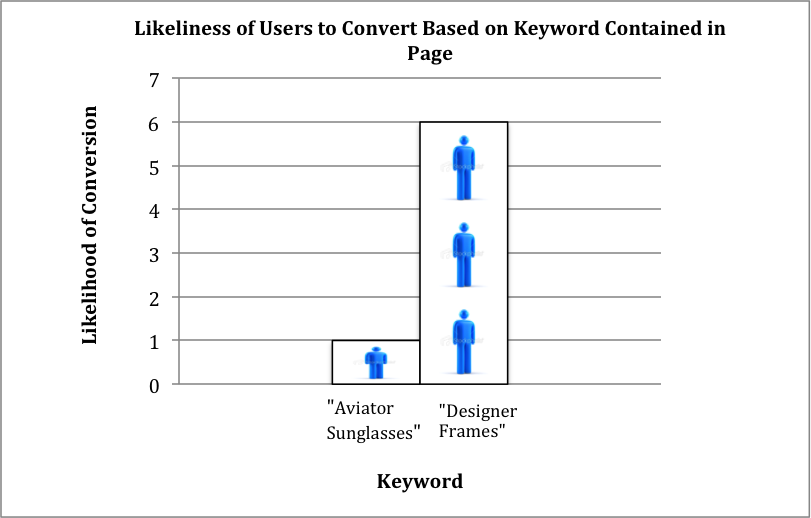Unstructured Data In Display: Cut Through The Fog To Provide Insight
In my last article, I talked about the importance of unstructured data for optimal performance in display advertising. This time, I’d like to bring that conversation full circle and explore another aspect of what unstructured data provides in spades: insight. While performance is typically the primary way of measuring advertising efforts, insight about your specific […]
In my last article, I talked about the importance of unstructured data for optimal performance in display advertising. This time, I’d like to bring that conversation full circle and explore another aspect of what unstructured data provides in spades: insight.
While performance is typically the primary way of measuring advertising efforts, insight about your specific buyer is undeniably the best way to kick-start that performance.
So, while advertisers find themselves in a foggy haze of excess information, clear and accurate insight becomes invaluable. Here’s a look at how unstructured data can be an influential vehicle by which true understanding can be gleaned, and then used as the fuel for important decisions.
Search Retargeting
When it comes to search retargeting, unstructured data supplies insight that is otherwise unattainable. By ingesting detailed information on which keywords have worked — and haven’t worked — the path to optimization becomes clear. While advertisers relying on segments are left to optimize with blunt instruments, those using unstructured data can do so in a more precise and effective way.
The granular insights that unstructured data provide help to:
- Improve current search retargeting and search campaigns
- Effectively build future campaigns
- Allocate spend more wisely
The keyword level performance data is essentially a road map, giving clear directions on how to quickly and effectively optimize campaigns to their goals. If a company that sells smartphones uses unstructured data, its advertising manager can view important information such as which model or smartphone brand used in search is most likely to convert to a sale.
In an actual example, 3,486 leads were produced by searches on one particular smartphone brand. In the same period of time, only 46 leads came from searches tied to a different brand.
The advertiser was able to redirect its costs to the high-performing keywords, and gain significantly more conversions as a result. This also allows marketing departments to tailor their creative efforts more closely to what performs best.
Site Retargeting
With site retargeting, the insight unstructured data provides is of a different variety. It’s a window into how visitors to various pages or products on a site are responding to a campaign or creative.
This allows an advertiser to determine how much to bid for impressions based on which individual pages the user has visited, and to optimize creative around the same. This type of insight helps to determine product placements on sites and site navigation paths.
Furthermore, similar to what it brings into search retargeting, insights from unstructured data can drive creative decisions since it provides a more comprehensive view of the buyer.
For instance, a particular company might find that visitors who landed on a webpage with an image of a particular wallet collection converted far more than visitors who simply were directed to the home page. The advertisers within this company could then decide to design new landing pages that included the wallet collection, driving more subsequent conversions.
Contextual Targeting
As mentioned above, unstructured data offers insights into which keywords are driving the best results. However, as opposed to keyword search retargeting where the keywords are those upon which a user has previously searched; with contextual targeting, the keywords are those present on the page where the ad will be displayed.
With unstructured data, an advertiser is able to see how the campaign is performing on pages that contain specific individual keywords, and then adjust their bids accordingly to drive more traffic on pages with high performing keywords.
An example of this is a sunglasses company that received unstructured data on a keyword contextual targeting campaign. The company observed that, when someone visited a page with the keyword [designer frames] included within its content, that user was almost six times more likely to convert to a sale than someone who visited a site containing the keyword phrase [aviator sunglasses].
Armed with this data, the company optimized their campaign with creative featuring [designer frames] which would also drive more impressions to serve on pages containing that term.
CRM Targeting
Finally, let’s look at the union between unstructured data and CRM targeting. As opposed to grouping many CRM recorded actions into opaque segments, unstructured data enables a much more granular analysis of specific CRM actions, as well as the timing of those actions.
So, advertisers can see how users who bought different products in a retail store, or who called into a support center with various issues, respond to online campaigns.
Unstructured data opens a brand’s eyes to a far more granular picture of what types of customers are responding to what types of ads and offers. Whether the data comes from search history, site visit patterns, CRM data, or contextual content, advertisers gain insight into the behavior of users who are more likely to convert.
Using that knowledge, advertisers can build marketing efforts to target more individuals in a similar fashion. Creative elements, messaging, and campaign strategy can be altered to better suit these prospects, ultimately leading to more effective advertising efforts.
The German poet Goethe once said, “There is nothing so terrible than activity without insight.” While I can think of some things that are more terrible, there is definitely a lot of advertising activity going on without insight. Unstructured data can help solve that problem.
Contributing authors are invited to create content for Search Engine Land and are chosen for their expertise and contribution to the search community. Our contributors work under the oversight of the editorial staff and contributions are checked for quality and relevance to our readers. The opinions they express are their own.
Related stories
